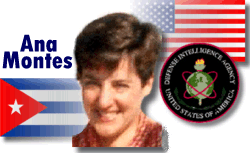By W. T. Whitney Jr., June 15, 2017
Cuba’s Council on Ministers on April 25 approved “Life Task (“Tarea Vida”): the State’s Plan for Confronting Climate Change.” Cuba’s National Assembly will soon consider Life Task for approval. Implementation will be the responsibility of the Ministry of Science, Technology, and Environment (CITMA). The ministry’s head, Elba Rosa Pérez, indicated that the Plan will require “progressive investments executed over short (the year 2020), medium (2030), long (2050), and very long (2100) terms.”
The unveiling of Life Task comes as the latest manifestation of Cuba’s sustained endeavor to contain the impact of climate change. The Cuban government has dedicated resources and talent to the project over the course of many years. Policy makers have relied on facts, data, and ongoing research. The process has been orderly and thorough, and yet accepting of modifications to fit with new realities. Crucially, the nation has responded to climate change on behalf of all Cubans.
In June1992, Cuban President Fidel Castro was in Rio de Janeiro attending the United Nations Conference on Environment and Development – the “Rio Earth Summit.” There, nations of the world arranged for future UN – sponsored meetings at which scientific findings of the Intergovernmental Panel on Climate Change would be reviewed. Those meetings, the “Conferences of the Parties,” have made recommendations and facilitated actions. The Paris agreement of 2015 was one of them.
Castro could well have stayed home in 1992; in the wake of the Soviet collapse Cubans were enduring humanitarian and economic disasters. He was in Brazil because the Cuba he spoke for espouses solidarity with all people. In remarks to the delegates, he gave voice to Jose Marti’s idea that “the homeland is humanity.” Castro warned of danger to humankind “due to the accelerated and progressive destruction of its natural living conditions.”
Afterwards, the government he led took steps on behalf of its own people. It created the Institute of Meteorology, the Institute of Hydraulic Resources, and networks of environmental agencies. It produced maps: a “Climate Atlas,” a national atlas, and soil and geological maps. In 1993 it created “The National Program for the Environment and Development.” The Ministry of Science, Technology, and Environment took shape in 1994. In 1997, Law 81 defined the structure and functioning of centers specializing in environmental work.
Cuba’s Academy of Sciences initiated studies in 1991. The Institute of Meteorology issued two major reports in 1998 and in 2000. After Hurricanes Charley and Ivan in 2004, research efforts intensified. Collective scientific work culminated in a summarizing report released by the Institute of Meteorology in 2014. The 430 page document took shape over three years. Titled “Impacts of Climate Change and Measures for Adaptation in Cuba,” it contained articles by dozens of authors from 26 Cuban research institutes.
The report surveys manifestations of climate change in Cuba, presents likely climate scenarios “for 2050 and 2100,” evaluates effects on various socio-economic sectors, identifies knowledge gaps, and establishes priorities in protecting natural resources. It calls upon the government to develop new capacities and to apply remedial and protective measures in an integrated fashion.
Findings of the report found their way into Cuba’s contribution to the “Second National Communication to the United Nations Framework Convention on Climate Change.” Speaking of the report, Myrta Kaulard, a United Nations representative assigned to Cuba, observed that, “The team of Cuban experts was capable of achieving equilibrium between the scientific rigor imposed by an investigation of such magnitude and the necessity to explain the anticipated impacts in clear language.”
CITMA head Elba Rosa Pérez on April 25 explained that the “Life Task” endeavor was the fruit of research, experimentation, agricultural innovations, and previous experience with protecting natural systems. She identified three priorities: “preserving lives in the most vulnerable areas,” food security, and tourism.
The plan calls for “strategic actions,” among them: a ban on new home construction in vulnerable coastal areas, adaptation of infrastructure to coastal flooding, adaptation of land use to drought and rising sea water, and new farming methods.
Specific projects will include : crop diversification; development of heat-resistant plant varieties; protection of urban infrastructure and dwellings; rebuilding of urban sea fronts; relocation of homes; restoration of protective eco-systems such as beaches, coral reefs, and mangrove swamps; improved engineering and hydraulic infrastructure for coastal regions; enhanced water availability; and reforestation to protect soil and water sources.
All in all, Cuba’s preparations for meeting threats on the way from climate change have been persistent and comprehensive; ample human and material resources were available.
Fidel Castro’s remarks in 1992 in Brazil foreshadowed the tension that would come later between two opposed ways of dealing with climate change. People in wealthy nations, he said, enjoy “lifestyles and consumer habits that ruin the environment; … consumer societies are chiefly responsible for this appalling environmental destruction.”
Castro was referring to the flow of wealth from poor to rich nations and implying that acquisitiveness in those countries fosters expanded production. He continued: “They have saturated the atmosphere with gases, altering climatic conditions with the catastrophic effects we are already beginning to suffer.” Today we realize that expanded production requires unlimited energy sources, mostly in the form of fossil fuels. So carbon emissions increase, and global warming accentuates.
“Make human life more rational,” Castro insisted. “Adopt a just international economic order. Use science to achieve sustainable development without pollution. Pay the ecological debt. Eradicate hunger and not humanity.” In effect, he was saying that privilege in the industrialized countries rests on subjecting the world’s majority population to poverty and suffering.
The entire line of reasoning, from Castro in 1992 to what we know now, confirms the imperialist and exploitative nature of imperatives shaping the prevailing worldwide approach to climate change. It also demonstrates the link between climate change and capitalist modes of living and producing.
Socialist Cuba has long resisted big – power pretentions and no longer do private businesses and corporations exploit workers there. In responding to climate change, aggravated by capitalism, Cuba had the right tools available, the very ones that were useful as Cuba moved toward a socialist society. Cuba elaborated a plan, and did so collectively. Planners looked at realities, subjecting them to scientific study. In a socialist society plans developed under state auspices serve the good of all. They don’t allow for accumulation or profiteering.




![_1-Laboratoria[1]](https://realcuba.files.wordpress.com/2015/09/1-laboratoria1.jpg?w=450)

